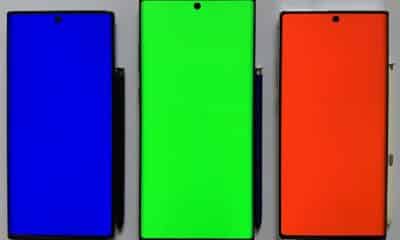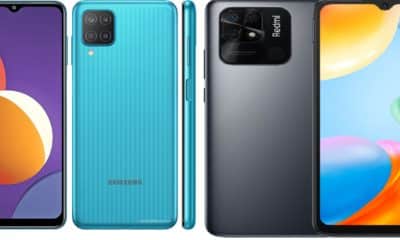Business
A Greener Galaxy: Making the Shopping Experience More Sustainable

Each time a Galaxy product is released, countless consumers, after watching review after review, make their way to Samsung’s retail stores to experience the company’s latest innovations for themselves.
As soon as they walk through the doors, they’re greeted with a smile and offered a chance to test out the new devices’ impressive features. The entire shopping experience is simple and seamless. And now, thanks to the tireless efforts of Samsung’s retail team, it’s more environmentally conscious than ever.
Read on to find out how the team completely reimagined the retail experience, rethinking everything from product kits and uniforms to packaging and furniture, to make Samsung stores more sustainable.
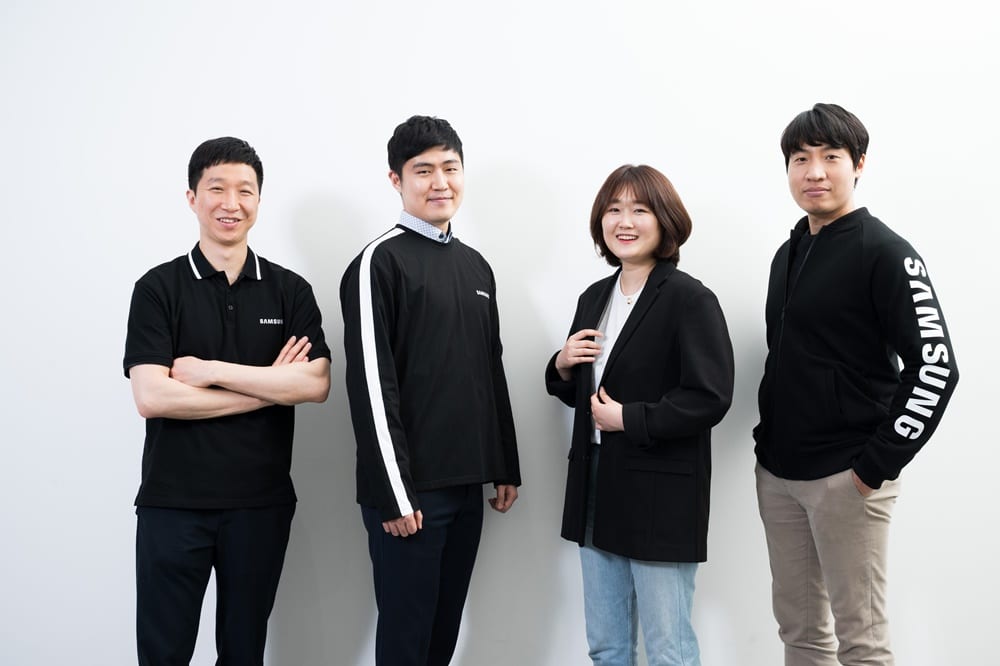
Multipurpose Merchandising
There are currently more than 3,000 Samsung retail stores worldwide, and each one acts as the face of the brand. Each allows customers to interact with Samsung and experience a wide range of innovations firsthand. Now, when customers enter a store, they’ll see products promoted with merchandising that’s reflective of the company’s green values.
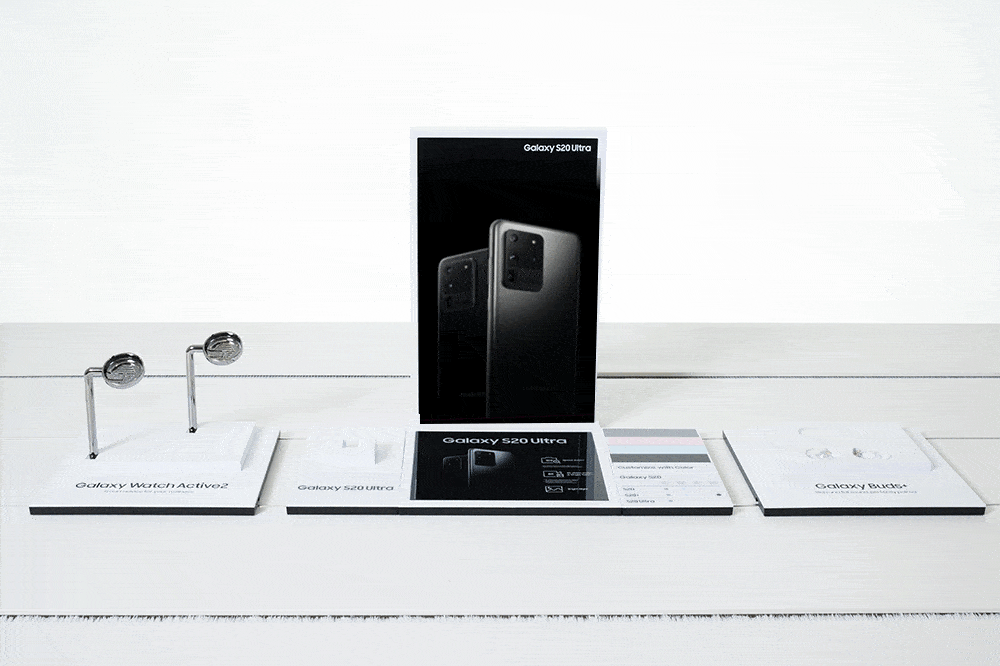
One of the first aspects of the shopping experience that the team revamped was the visual merchandising (VMD) kits that showcase new Samsung products. Whereas previously, each product featured a custom merchandising kit that was discarded after use, now, product merchandising is modular and designed to swap easily in and out.
“From the planning stage, we tried to make the VMD kits like building blocks that could be easily assembled and disassembled,” said Leo Lee, a member of the retail marketing team. “We wanted to make some parts replaceable and others reusable. This helps the environment because it allows kits to be reused several times, and it makes it easier to install them in stores around the world.”

In addition to reducing waste, the modular kits are created utilizing plastic recycled from bottles and CDs. “Let’s say we used 100 tons of plastic to create a particular kit before,” said Lee’s colleague on the retail marketing team, Ryoung Hur. “Making this change allowed us to reduce that amount to 70 tons. Going forward, we plan to continue increasing our use of recycled plastic, and reducing our reliance on new plastic.”
There were, however, a number of challenges that the team needed to overcome to ensure that the recycled plastic wouldn’t compromise the quality of the kits. Not only can recycled plastic increase the rate of defects in the manufacturing process, it can also make it difficult to produce pure white materials. The team overcame those challenges, Hur explained, through continuous investment and tireless efforts.

With an eye toward the future, the team designed the new, environmentally conscious VMD kits to be compatible with a variety of modern innovations, including NFC chips. As Yeonjin Kang, a member of the VMD team, explained, “We developed solutions that combine environmentally conscious materials with digital elements, and we’ve worked with various brands to produce them. We’re constantly receiving inquiries regarding these types of kits, and the feedback we’ve received has been nothing but positive.”
Environmentally Conscious Clothing
You may have come across clothing or fabrics whose tags attest that they’ve been made using organic cotton, or cotton grown without the aid of any form of chemical treatment, such as herbicides, pesticides or chemical fertilizers. The environmental benefits of using organic cotton are considerable, as studies suggest that compared to general cotton production, organic utilizes 90 percent less freshwater and 60 percent less electricity, and can help reduce cotton’s impact on global warming by as much as 46 percent.
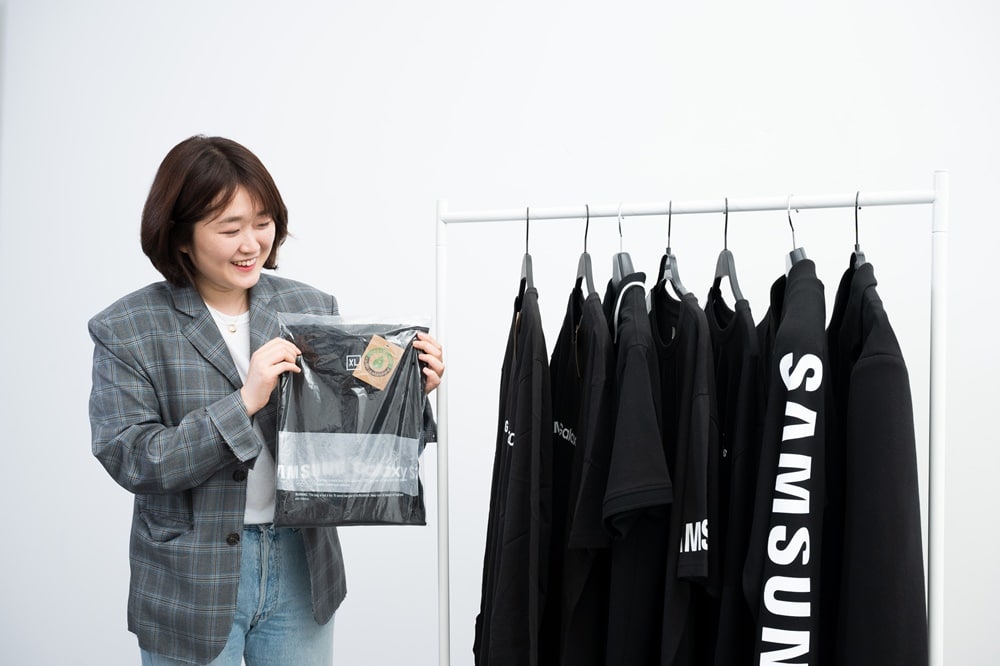
Recently, Samsung Electronics switched to using organic cotton for all official clothing. “If you think about it, with our retail uniforms and the promotional T-shirts that global staff wear for new product launches, we produce a lot of clothing,” said Kang. “Because these T-shirts need to be mass produced and are frequently replaced, we chose to make the switch to organic cotton to help minimize their environmental impact. Because we handled the entire process – from selecting materials to design and production – we were able to make this shift in a cost-effective manner.”
“We visited manufacturing site and inspected each part of the process,” Kang continued. “We also plan to change our clothing’s packaging to polybags, which are manufactured from materials recycled from abandoned LDPE (low-density polyethylene), and we’re constantly working with manufacturers to explore ways to make this aspect of our operations more environmentally conscious.”
Prioritizing Recycling From the Production Stage
Because products packaged using excessive amounts of materials can make sorting and recycling difficult, Samsung’s retail team incorporated a variety of enhancements that make recycling its packaging nice and simple.
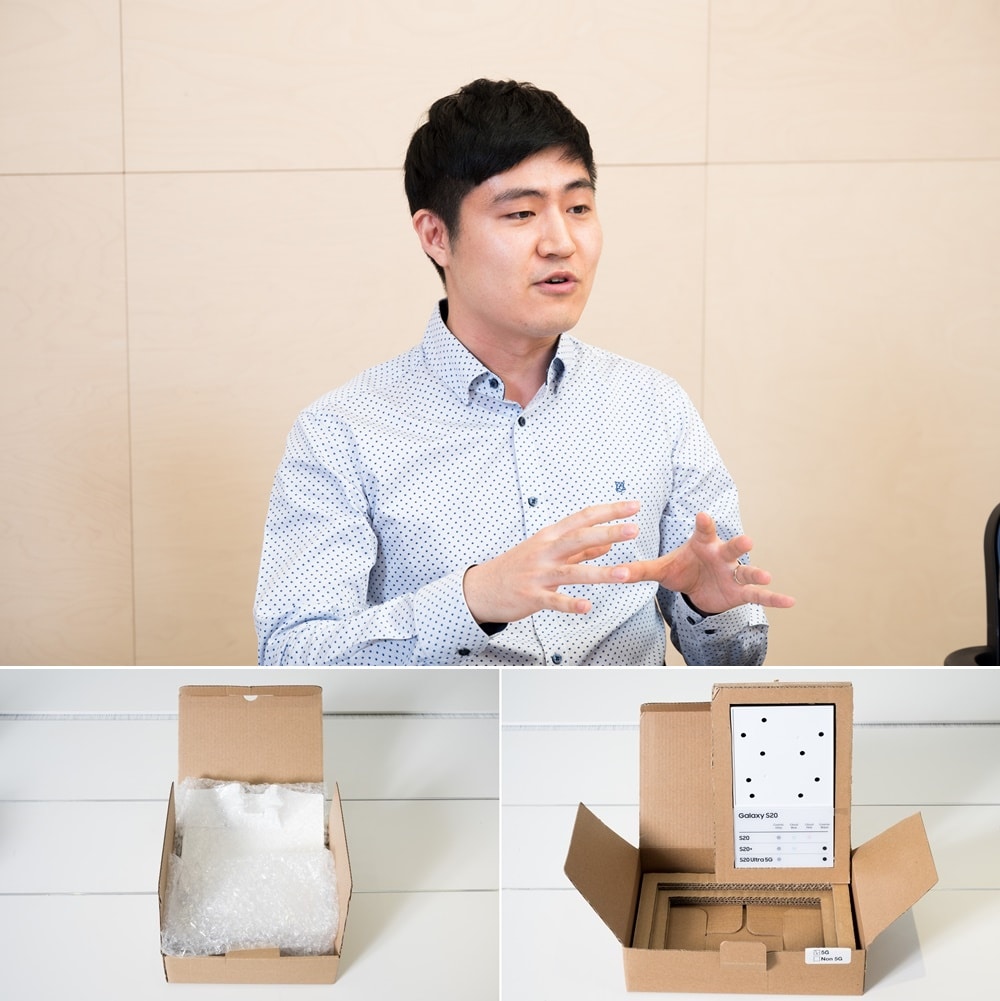
As Soohwan Chi, from Samsung’s retail design team, explained, “To make recycling easier, we replaced elements like vinyl and Styrofoam with recyclable paper. We also switched to printing with soy ink, which can help simplify recycling even further.”
“Encouraging this kind of thoughtful approach to manufacturing,” Hur added, “is just as important as emphasizing thoughtful disposal. It can only be achieved,” he continued, “when each and every element of the manufacturing process has been carefully considered.”
“For example, to make our VMD kits easier to install and recycle, we minimized the use of glues, screws and tape, and developed an easy-to-apply hook mechanism,” said Hur. “We also simplified their aesthetic elements to prevent chemical paints from disrupting the sorting process when the kits are recycled.”
Connecting with Consumers on an Important Cause
The need to go green – to take steps to protect the environment from the effects of global warming – has never been greater. Thankfully, it seems with each passing day, more people – millennials in particular – are realizing the importance of sustainable efforts, and are showing greater interest in how products are made and how they impact the environment.
Samsung’s retail team takes that interest as inspiration to continue to explore new ways to emphasize the importance of going green. “Because I work in our retail stores, I’m constantly thinking about what messages to deliver to our customers,” said Lee. “Developing a retail experience that both reflects Samsung’s standards of excellence and is conscious of the environment allows us to communicate just how important sustainability is to our company.”

Because there’s no single solution for going green, the team is committed to trying anything that can help. It’s a step-by-step process, the team explained, that’s paying dividends for the environment, and ensuring that visitors to Samsung stores enjoy the best possible experience.
Source: Samsung Newsroom
-

 Gadgets6 months ago
Gadgets6 months agoCan Dogs Use VR Headsets?
-

 Tech6 months ago
Tech6 months agoWhat Does “Voicemail Pending” Mean?
-

 Phones5 months ago
Phones5 months agoHow Do I Know if My Phone Supports AR?
-

 Tech5 months ago
Tech5 months agoDoes Astigmatism Affect Your VR Experience?
-

 Business5 months ago
Business5 months agoHow Do You Make an AR Without Coding?
-

 Phones5 months ago
Phones5 months agoWhat To Do About That Weird Notification Sound on Android?
-

 Tech4 months ago
Tech4 months agoHow Can I Get Google Drive 1TB for Free?
-

 Phones4 months ago
Phones4 months agoHow Does SnapDrop Work? – Instant File Sharing Made Easy

